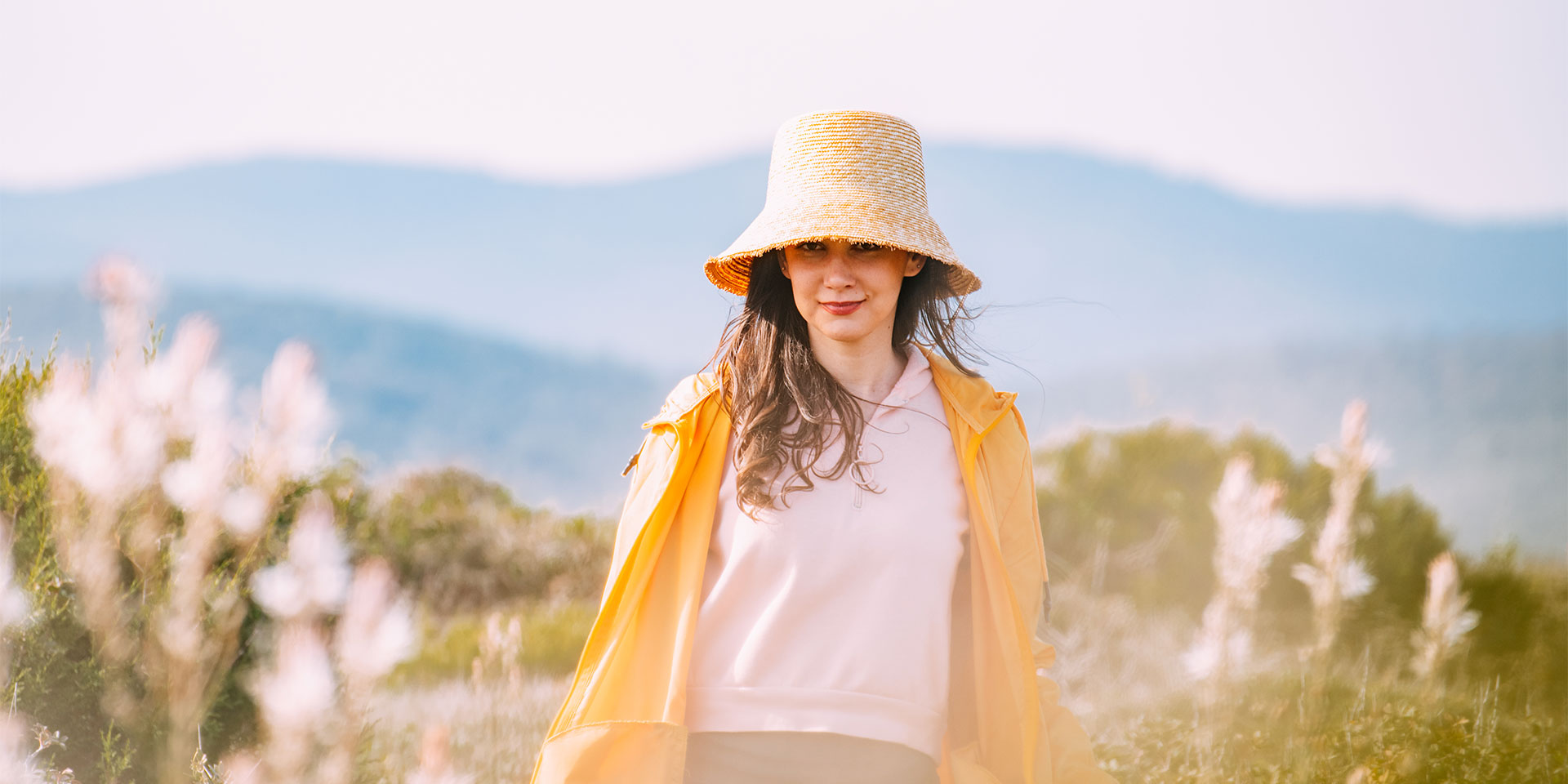What would you think if your doctor prescribed a dose of nature, as a clinical and therapeutic treatment—to admire a cloud, to have a meal at the beach, to bury your face in the grass? This is exactly what some doctors are doing, after studies have shown the benefits of connecting with nature—especially since the trend of moving away from nature in recent decades has led to the birth of an indoor generation, which spends up to 90% of its time indoors.
We are increasingly becoming a generation of indoor people, for whom the journey to school or the office is, most often, the only opportunity to benefit from fresh air and natural light midweek, says Peter Foldbjerg, head of daylight energy and indoor climate at a Danish company.
The fact that some people don’t even spend an hour a day in nature is deeply concerning, says Foldbjerg, commenting on a survey that showed Europeans and Americans are locked in their homes and offices up to 90 per cent of the time.
Indoor generation
Conducted on more than 16,000 adults from 15 countries in Europe and North America, the survey showed that although respondents estimated that they spend only 18% of their time indoors, in reality, the percentage was significantly higher.
More than half of the survey participants (52%) said they spent an hour a day or less in nature in the last month, and 85% of them believed that, as children, they played in nature much more than today’s kids do. The survey also showed that one in four Americans spends between 21 and 24 hours indoors, and 41% stay indoors between 15 and 20 hours.
Canadians have proven to be indoor champions, with 69% of them saying they spend an hour or less a day outside, compared to the global average of 52%.
Over the last 200 years, the percentage of people working outdoors has decreased dramatically, from 90% to 20%, says Dr Russel Foster from Oxford University, who expresses his concern about this transition “from being an outdoor species to spending most of our time in dim, dark caves.”
Even during free time, nature baths are not very popular—according to the Outdoor Foundation, the number of outdoor trips made by Americans decreased by one billion in 2018, compared to 2008, and in the case of children, the number of outdoor outings decreased by 15% in 2018, compared to 2012.
Immersion in technology is one of the causes of disconnection from nature, but the causal picture is somewhat more complex, just as everyday life has become in recent decades.
How did we drift apart from nature?
In 2005, author Richard Louv coined the concept of Nature-Deficit Disorder, a term that refers to alienation from nature, especially in the case of children.
Urbanisation plays a significant role in the equation of this distant relationship, writes Louv, who analyses some of the causes of newer generations disconnecting from the natural world.
The urban environment hosts 54% of the world’s population (4.4 billion inhabitants, compared to 746 million in 1950) and it is estimated that 7 out of 10 people will live in cities by 2050.
Alienation from nature occurs because of urban planning that ignores the importance of green spaces (lack of parks and green spaces in neighbourhoods, or transport systems that bypass natural areas), points out Louv.
Although many families have limited opportunities to reach nature, a major factor of alienation from nature is that we live in a culture of fear, explains the author. We fear strangers or real dangers in some neighbourhoods, but also the natural world, which is not always a risk-free environment either. However, fear can be overcome by familiarising yourself with the environment and by acknowledging its benefits, which outweigh the risks.
Technologisation and the proliferation of virtual communication tools represent another obstacle in our relationship with nature. Screen time has increased more than ever among America’s children and teens, according to a survey that found that screen device use among these age groups increased by 17 per cent between 2019 and 2021, including due to changes caused by the pandemic.
Excessive use of electronic devices was already a problem before the pandemic, according to a 2019 report from the Association of Play Industries (API), which warns that there has never been a time when children are getting so little physical activity and brings evidence that screens are the main culprit. “By the age of 8, the average child will have spent nearly one full year of 24-hour days on discretionary screen time,” the report shows.
What is more, media consumption is increasing among all ages. A study found that, in 2016, the average time spent in front of the screen among adults was 10 hours and 39 minutes per day.
It’s not the technology itself that’s the enemy, but our inability to maintain a balance, says Louv, pointing out that as we allow screens to steal more and more of our time, our senses are narrowed and we have less and less energy to spend time outdoors.
Technology can also mediate, promote or replace experiences in nature, through various means—robots designed to be pets, apps that help identify trees, plants or constellations, virtual tours of natural sites, and so on. Studies show that such interaction can bring more benefits than the lack of any type of exposure to nature, but that the beneficial effects are smaller compared to direct contact with nature.
The intrusion of technology into our relationship with nature is one of the central psychological problems of our times, psychologist Peter Kahn believes. Experiments conducted by Kahn in his laboratory have shown that children’s interactions with AIBO (robot dogs produced by Sony that can recognise and respond to more than 100 voice commands, express a range of emotions and, in the most advanced versions, evolve from puppy to adult) were not as deep as interactions with a real dog.
By interfering with our relationship with nature, technology can contribute to what we call environmental generational amnesia, says Kahn, explaining that humanity is progressively forgetting the state of the natural world as it once was, with each generation perceiving the environmental conditions they encounter during childhood as the norm.
In the 1990s, researcher Daniel Pauly remarked that each generation of fishermen, but also scientists, accepts the decreasing diversity of fish populations as the “baseline.” Thus, each generation treated depleted ocean biodiversity as normal, an effect Pauly called the Shifting Baseline Syndrome.
High tolerance for the loss of natural resources makes it difficult to solve environmental problems, from deforestation to climate change, Kahn points out. His years of studying the relationship between humans and nature have taught him that this bond is fragile and that we should use exposure to nature through technology as a bonus, not a substitute for direct interaction.
What is more, the physical and mental benefits we reap from indirect contact with nature will diminish in future generations, believes the psychologist, who warns of the risk that these “partly good” benefits will “impoverish us as a species” in the future, as the distance between us and nature will deepen.
Nature, a medicine at hand
Nature experience may be vital to our mental health, Stanford University researchers concluded, following a study that showed that individuals who walked for 90 minutes in nature showed reduced neural activity in the subgenual prefrontal cortex, a cortical region highly active during rumination (the continuous focus on negative thoughts that results in emotional distress), compared to those who walked in an urban setting.
The role of nature in alleviating stress is reflected by a growing number of studies. To check if this effect is more significant in the wilderness, where human intervention is minimal, compared to environments managed by people, American researchers monitored the stress levels of study subjects in three different environments: a forest, a municipal-type park, and a gym. Subjects who walked in the wooded area had the lowest levels of stress, as measured by indicators such as lower cortisol levels, fewer reported worries, and higher levels of joy.
Other researchers have found no significant differences between the effects of “wild” nature and those of “human-managed” nature on emotional well-being. Thus, a 2016 study found that exercise improved mood and decreased cortisol levels both in a natural environment and in urban green spaces, with the natural environment providing additional cognitive benefits that persisted for at least 30 minutes after exiting the environment.
Even short-term visits to urban parks and forests can reduce stress levels, while time spent in the city diminishes positive emotions, a study coordinated by Professor Liisa Tyrväinen showed.
Increased exposure to green spaces has been associated with lower blood pressure, lower cardiovascular disease and all-cause mortality, lower risk of preterm birth and type II diabetes, and lower incidence of asthma and dyslipidemia, according to a meta-analysis of 143 studies.
A study by American researchers showed that four days of immersion in nature (and the corresponding disconnection from technology) increased creativity and problem-solving ability by 50%.
Is there a “dose of nature” we need to take to fully benefit from its effects? The authors of a 2019 study published in Scientific Reports provided an answer after analysing data collected from 20,000 Britons over a two-year period.
At least 120 minutes per week spent in nature could represent the essential time threshold for promoting the body’s well-being, was the conclusion of the study. People who spent at least two hours a week outdoors were significantly more likely to have good health and be mentally balanced compared to those who did not go out in nature over the course of a week.
This threshold was also present in people with chronic illness, thus suggesting that the association between time spent in nature and health benefits is not explained just by the tendency of healthier people to get out into nature more often.
In fact, the positive effects of the two hours spent in nature were present in both sexes, young and old, diverse ethnic groups, and those living in economically advantaged and disadvantaged areas alike.
With so much good news about the benefits of contact with nature surfacing from a multitude of studies, it is not surprising that doctors are already prescribing the number and duration of outdoor activities. Paediatrician Robert Zarr is one of them. The founder of a non-profit organisation that encourages doctors to prescribe outings to the park for patients, Zarr himself gives to the children and teenagers who come into his office prescriptions with the name of a park near their home, including the activity to be carried out outdoors, its duration, and frequency.
Starting in 2018, the National Health Service in the Shetland Islands launched the Nature Prescriptions project to treat conditions such as depression or high blood pressure. When treating patients whose health could benefit from time spent in nature, doctors provide them with a leaflet showing the positive effects of getting out in nature and a calendar with ideas related to outdoor activities that can be done in their region.
The project offers patients a structured plan to access nature, part of a drug-free approach to health problems, explains doctor Chloe Evans.
After all, regardless of the age of their patients, no doctor wants to prescribe drugs “when there’s a safer alternative, which is spending time outside,” as paediatrician Robert Zarr points out.
Carmen Lăiu is an editor at Signs of the Times Romania and ST Network.


















